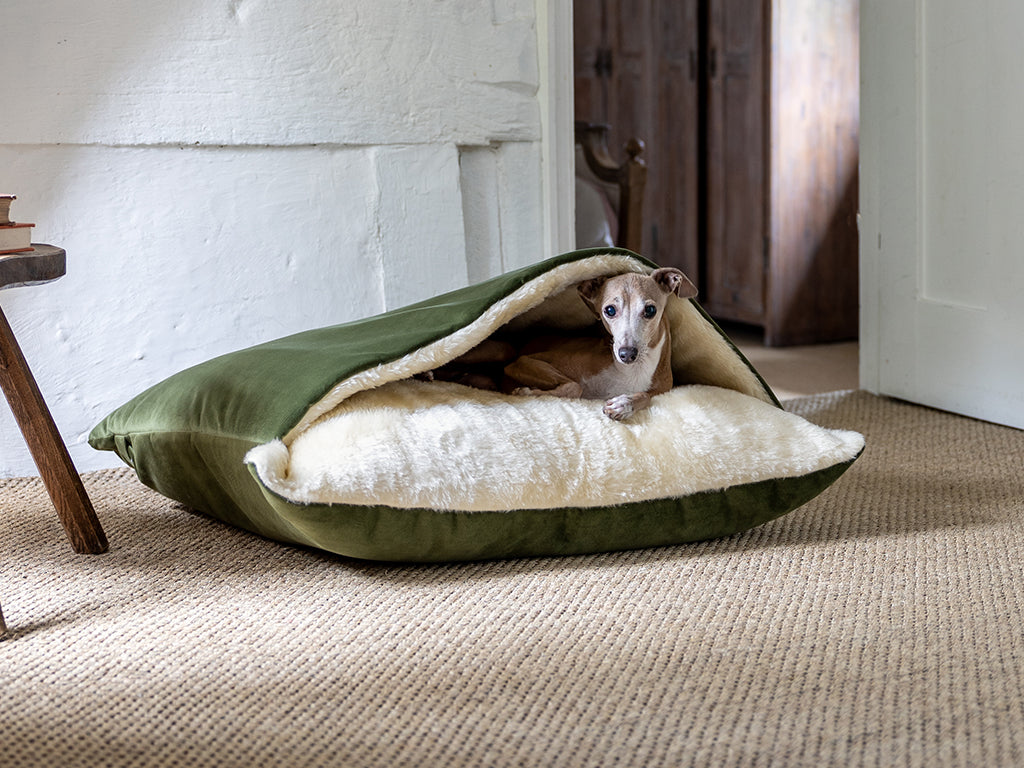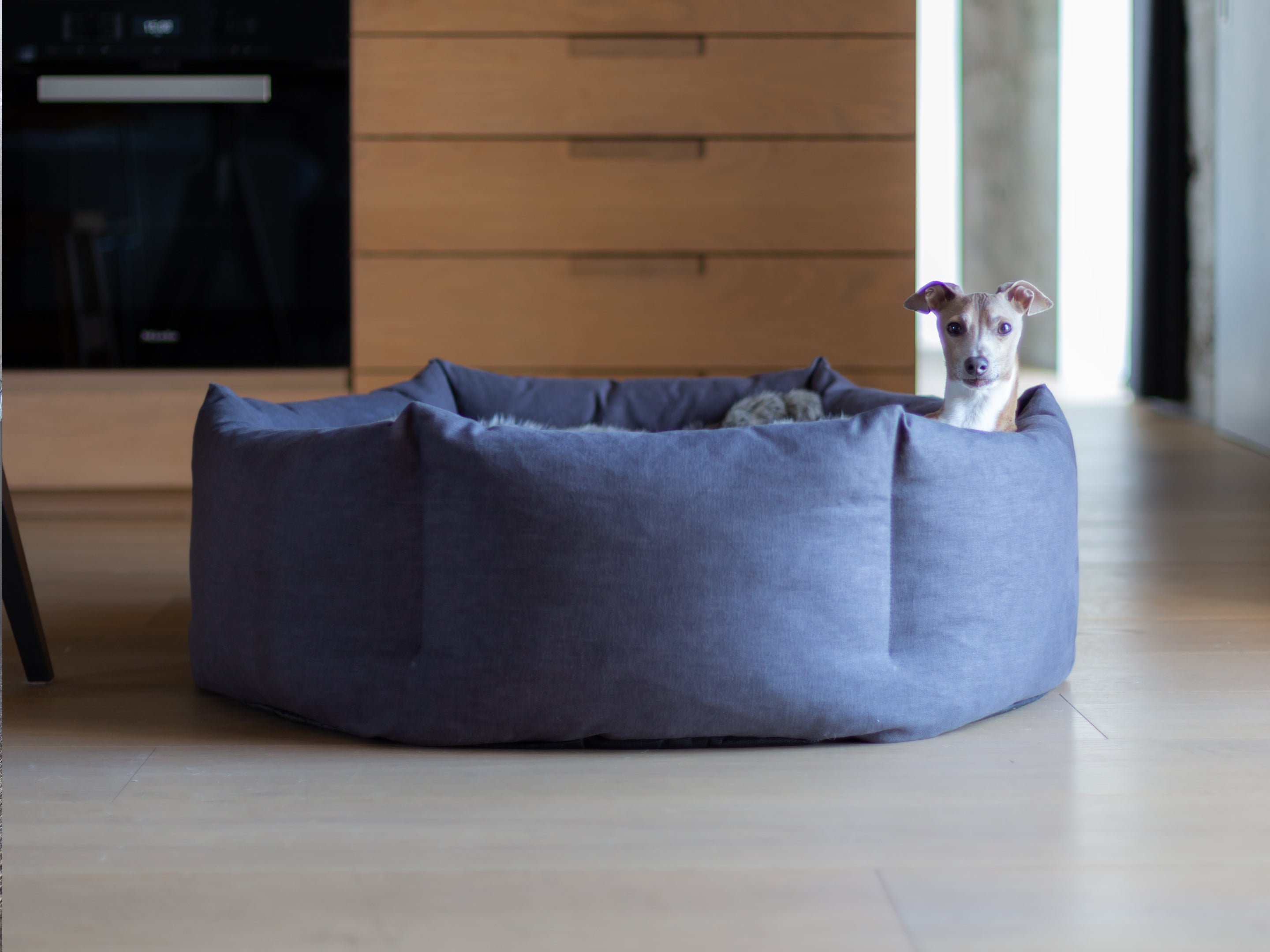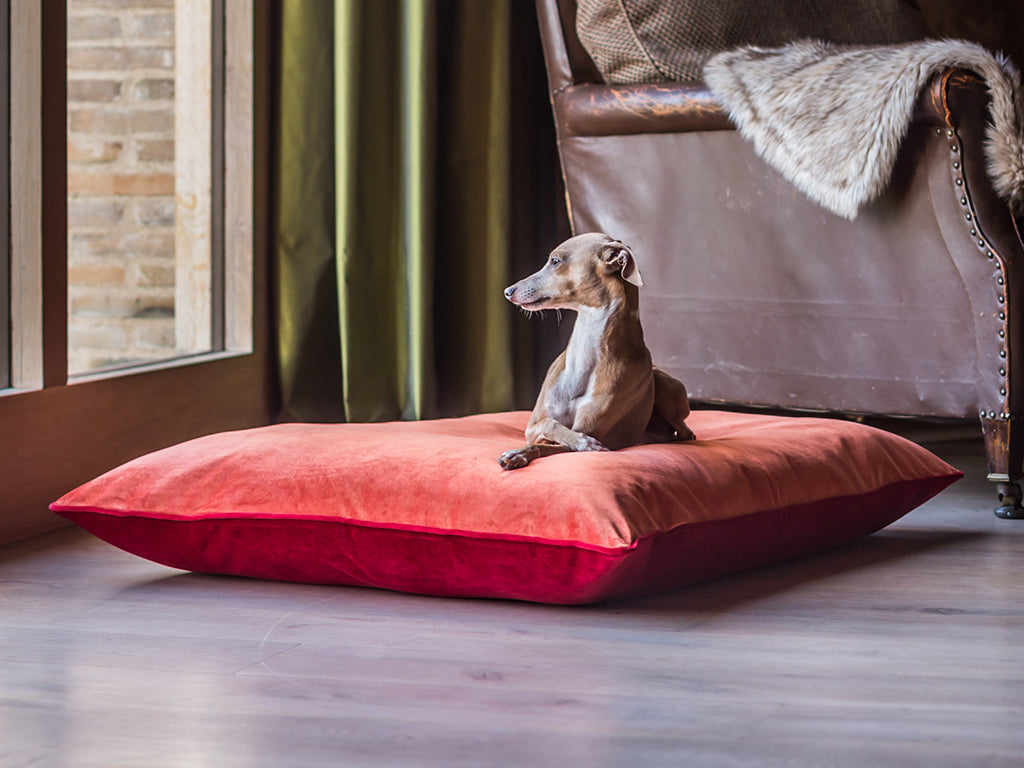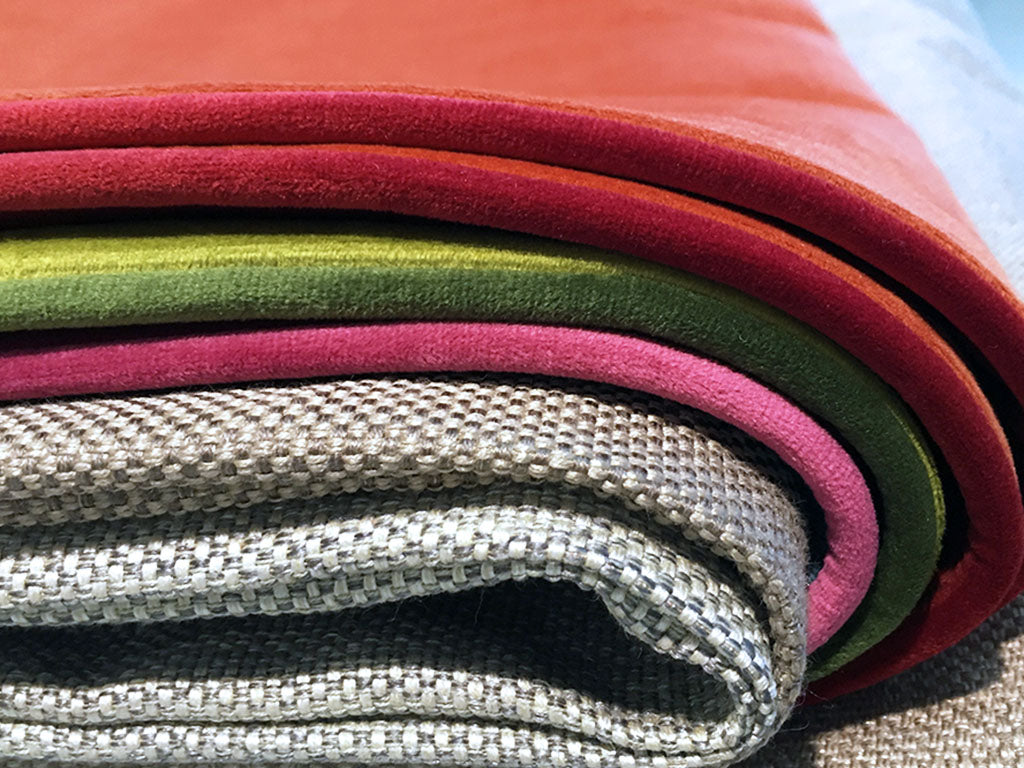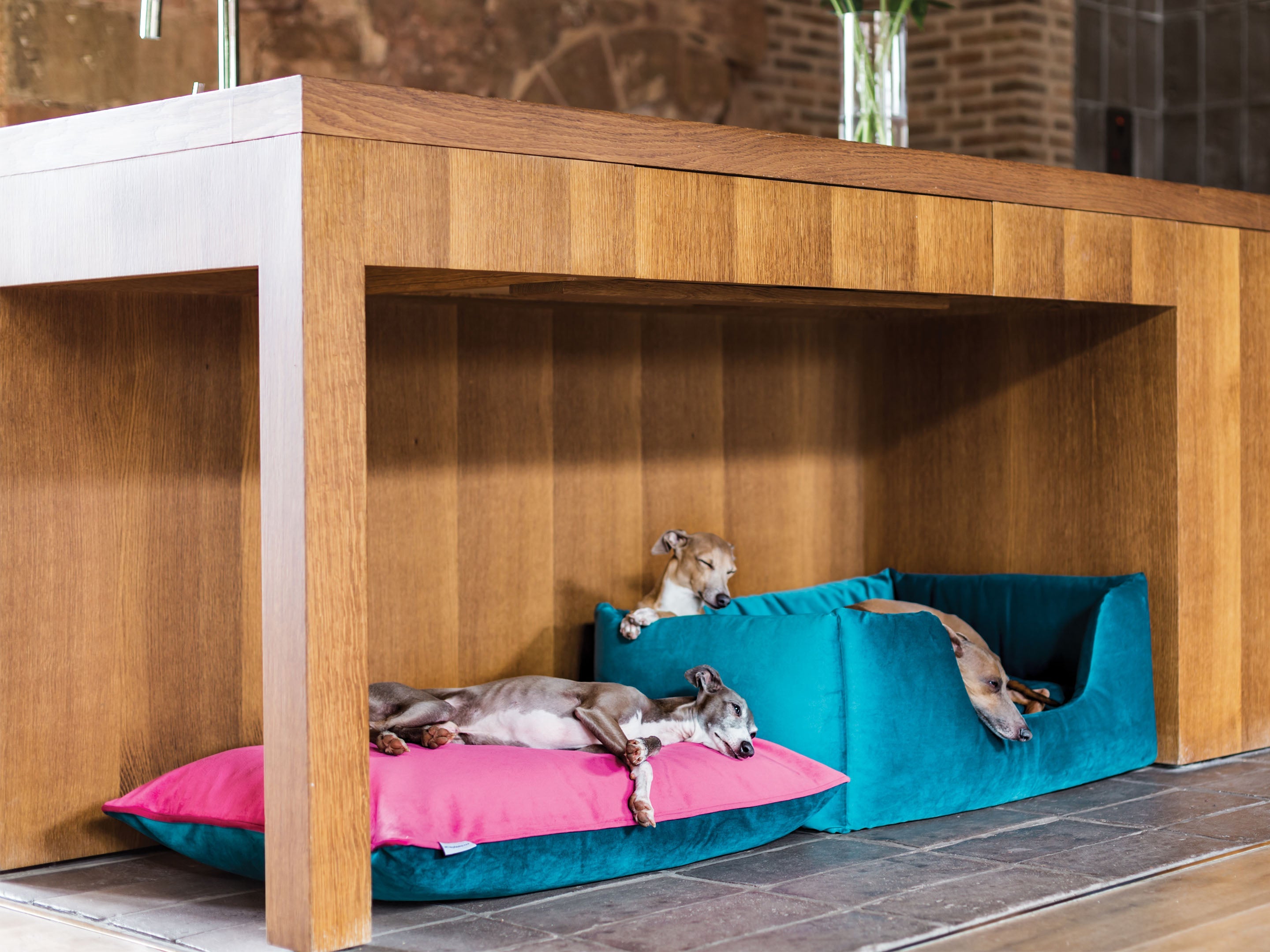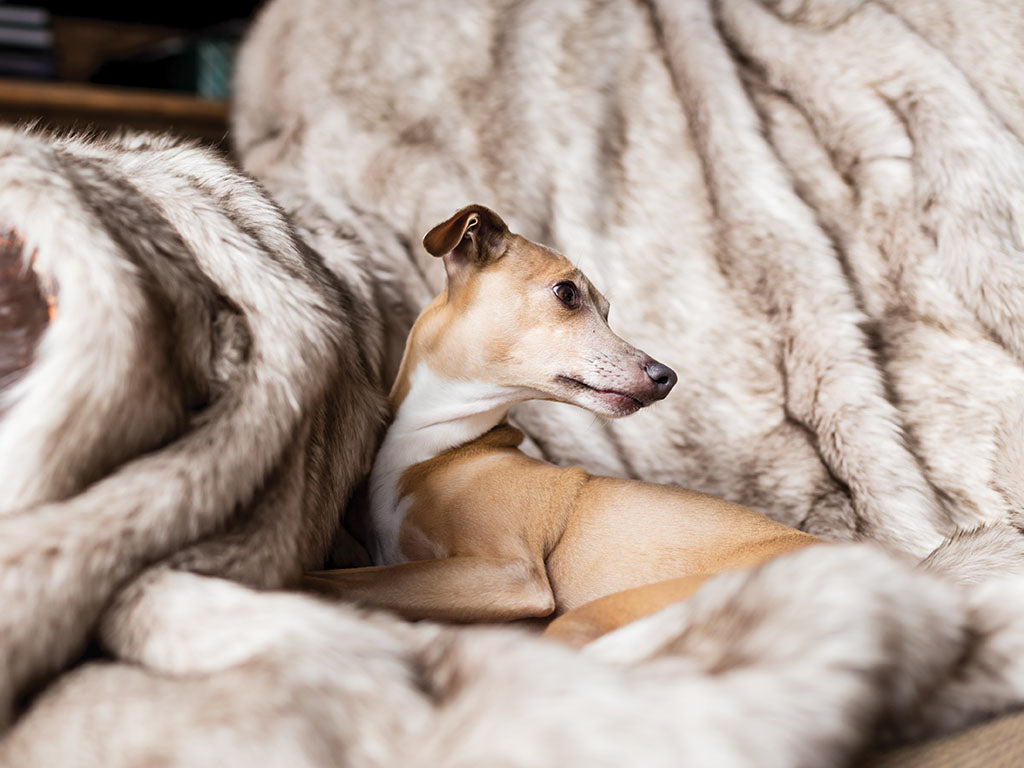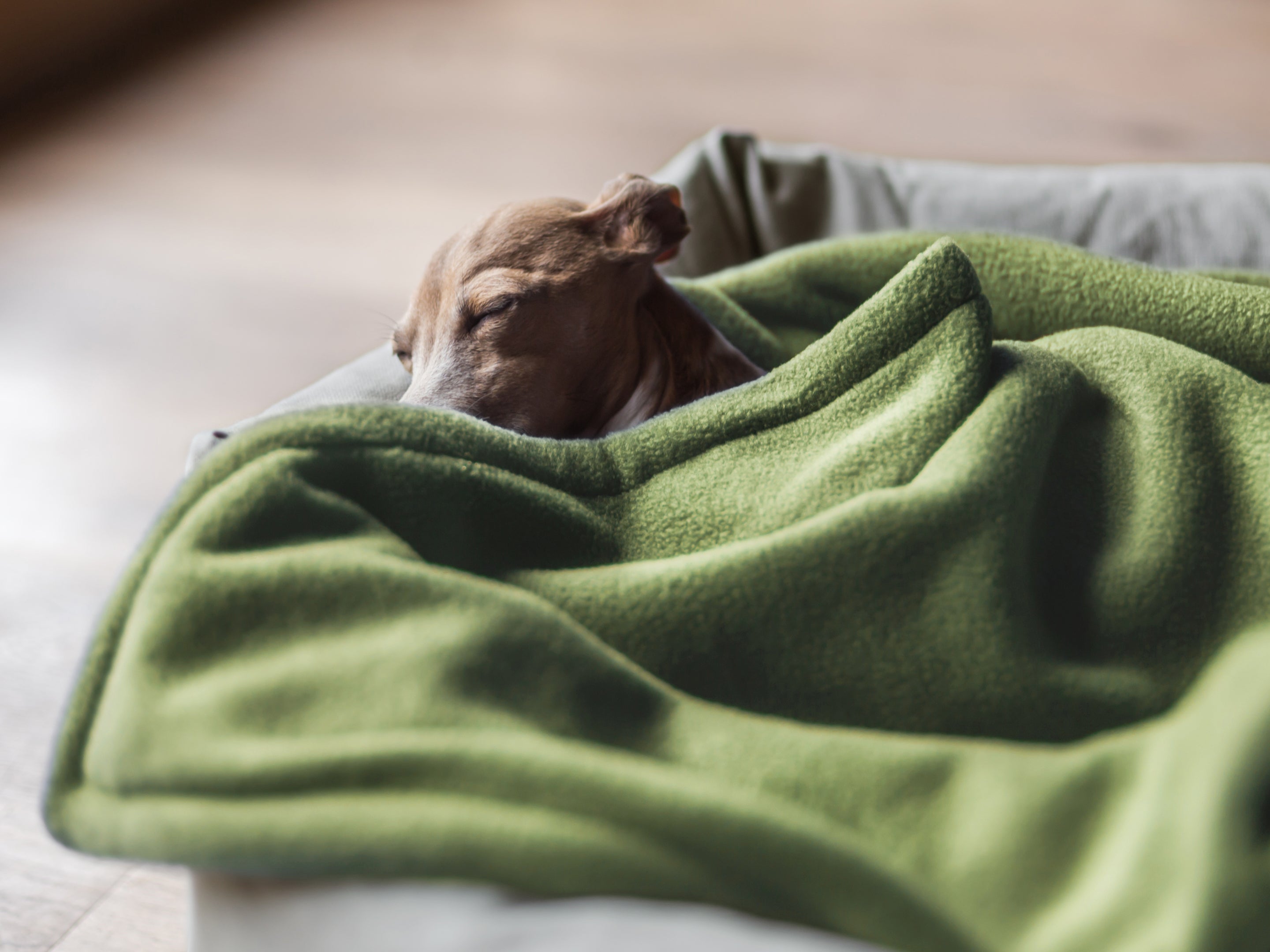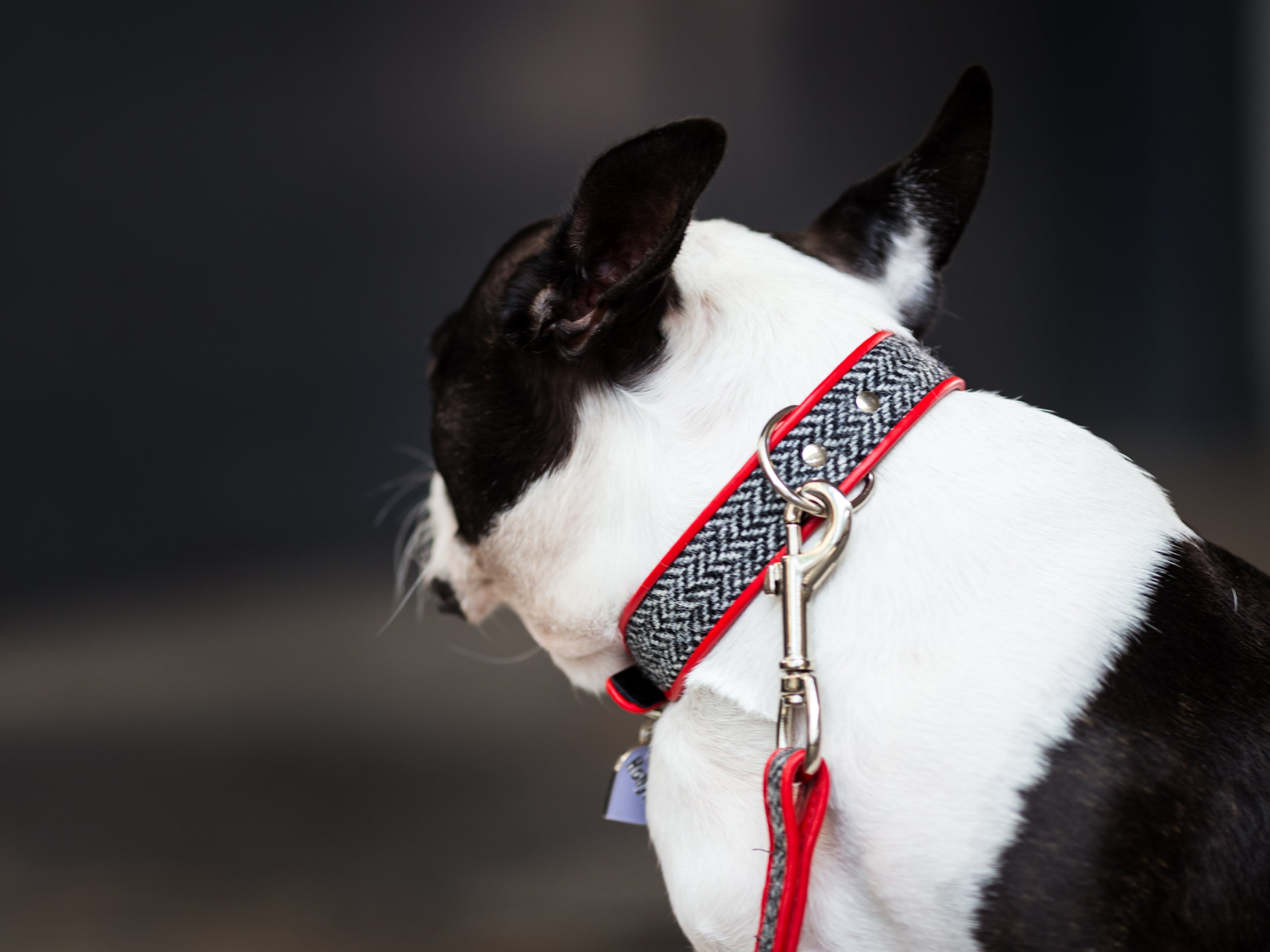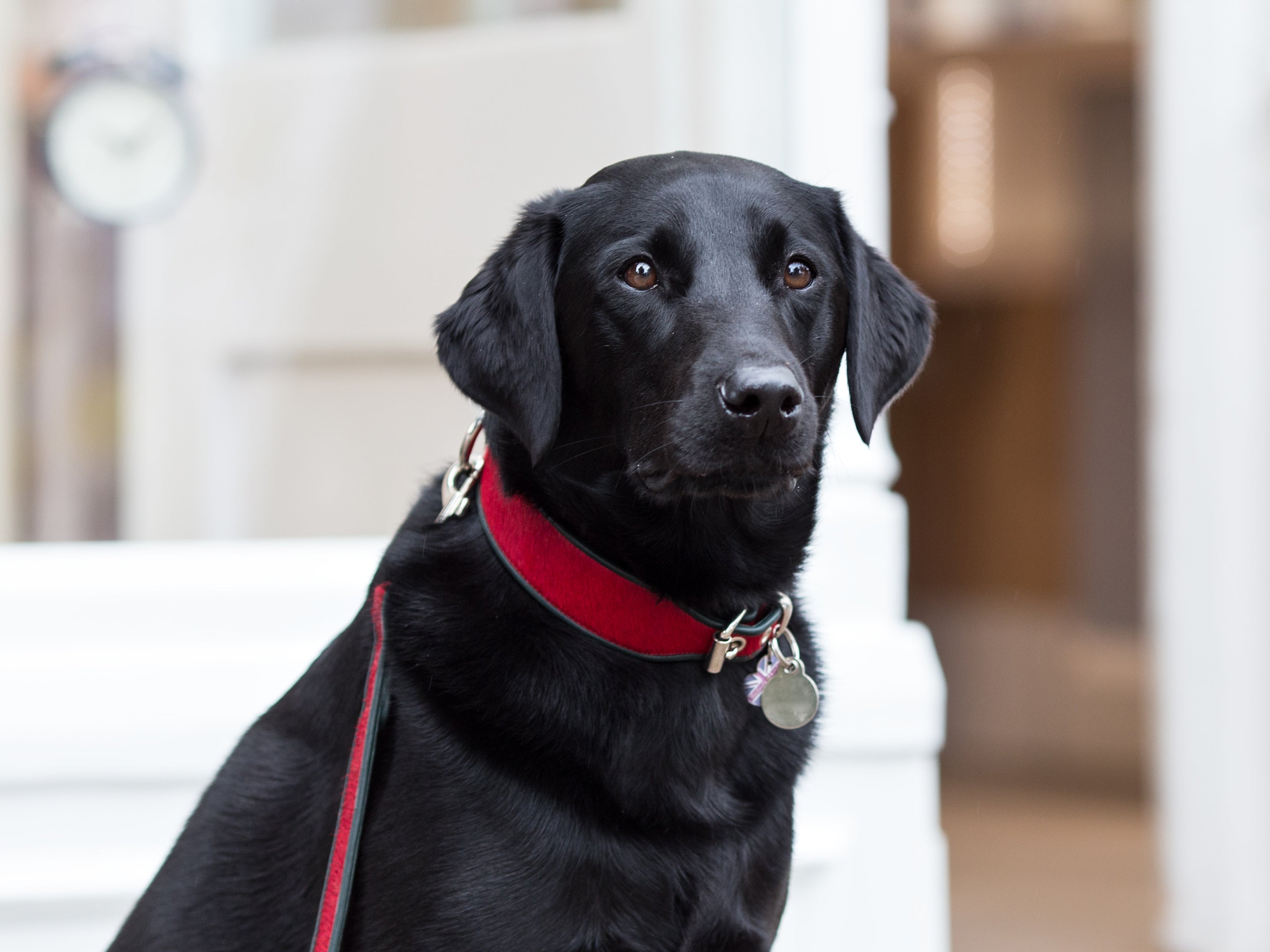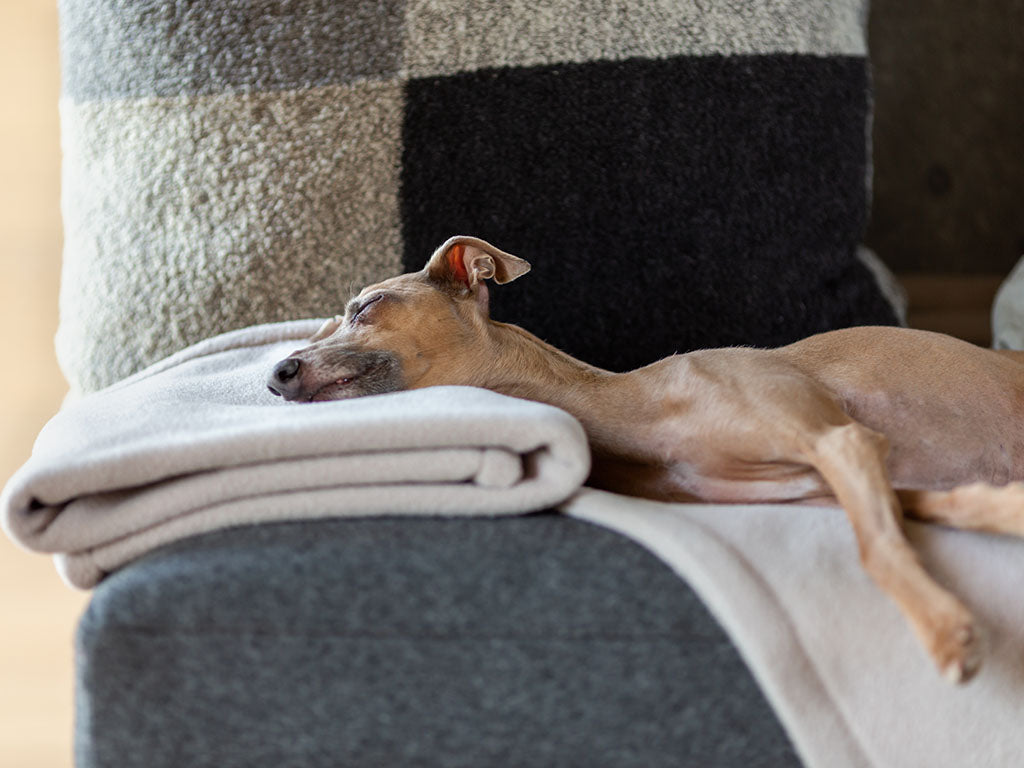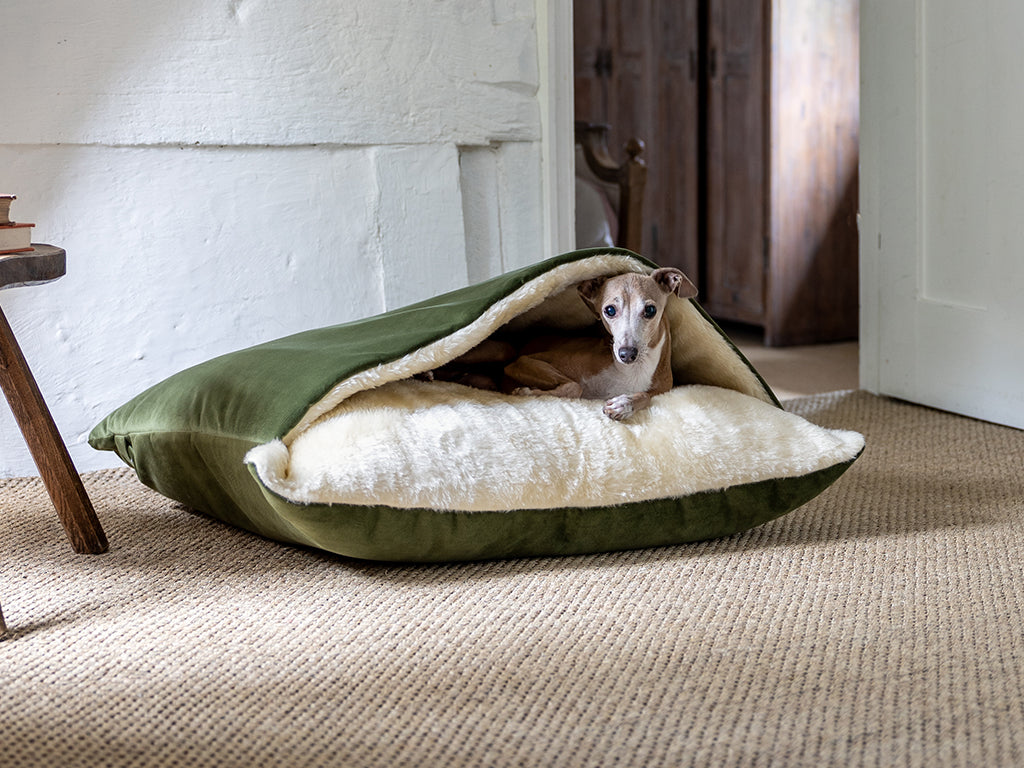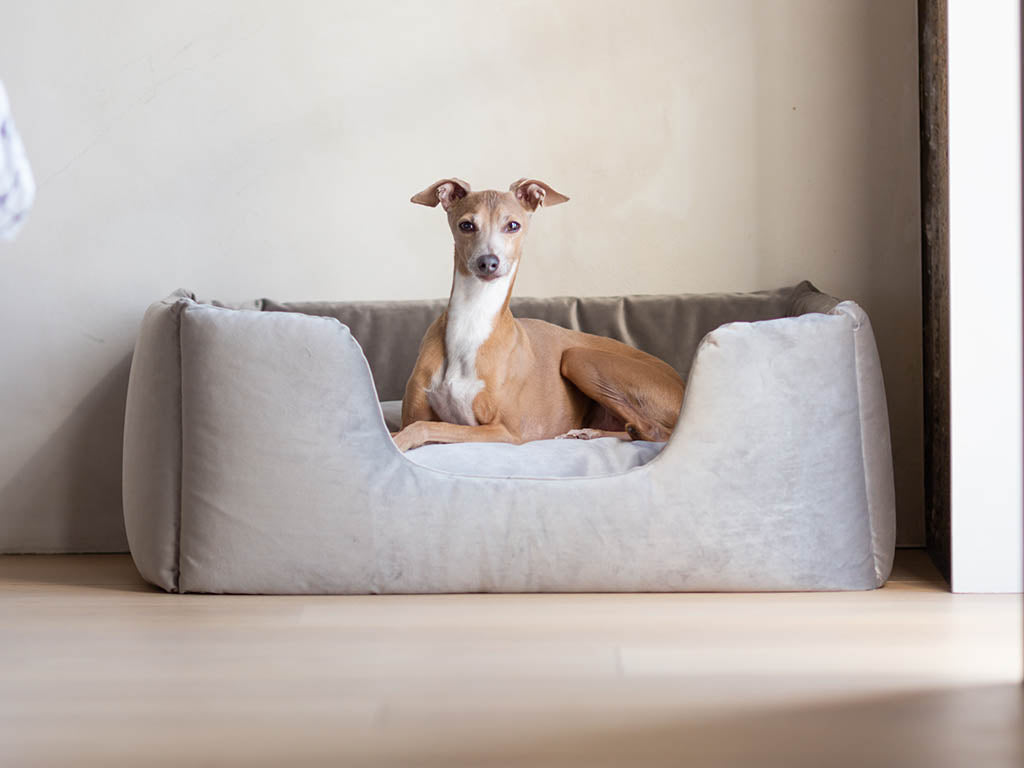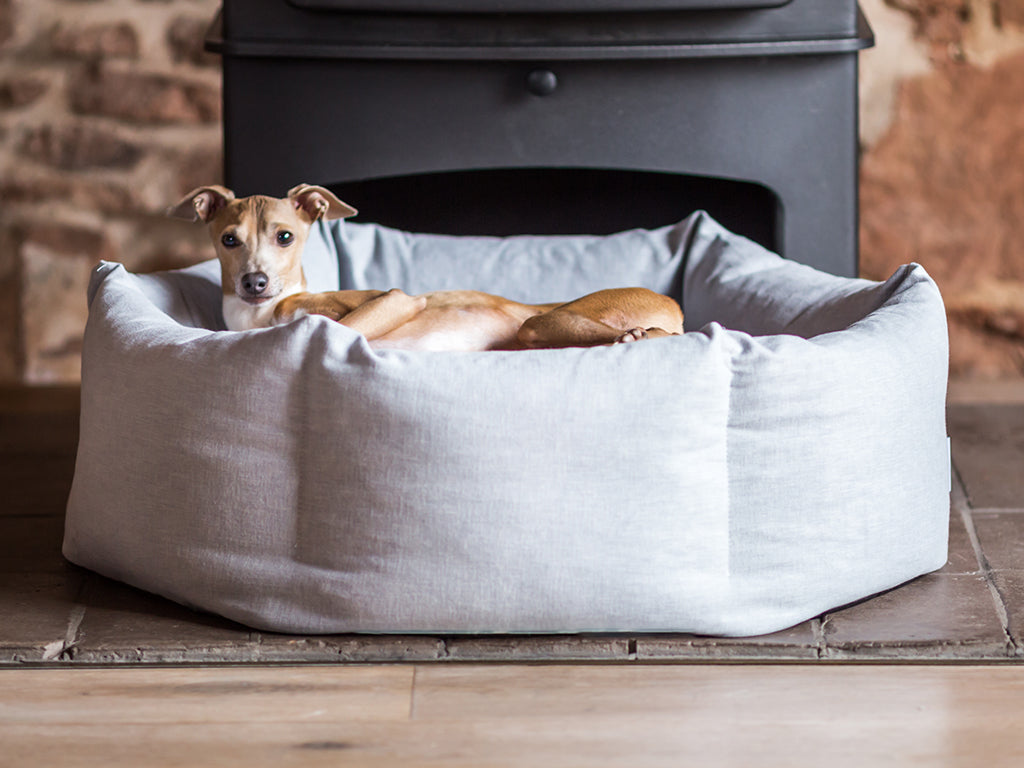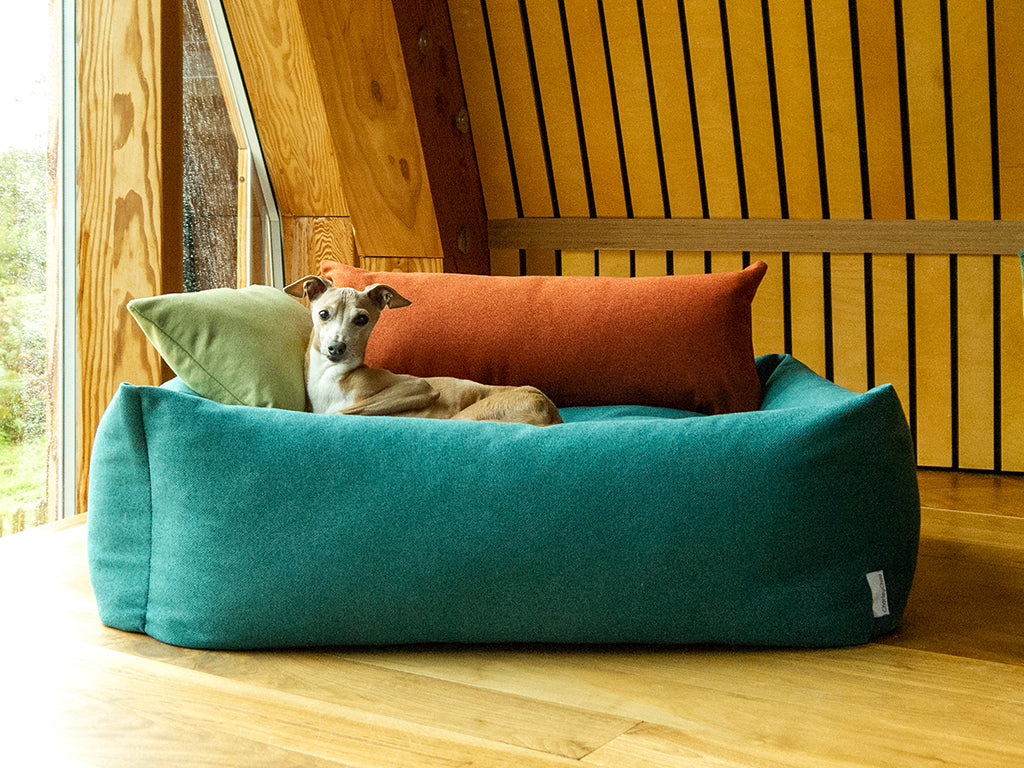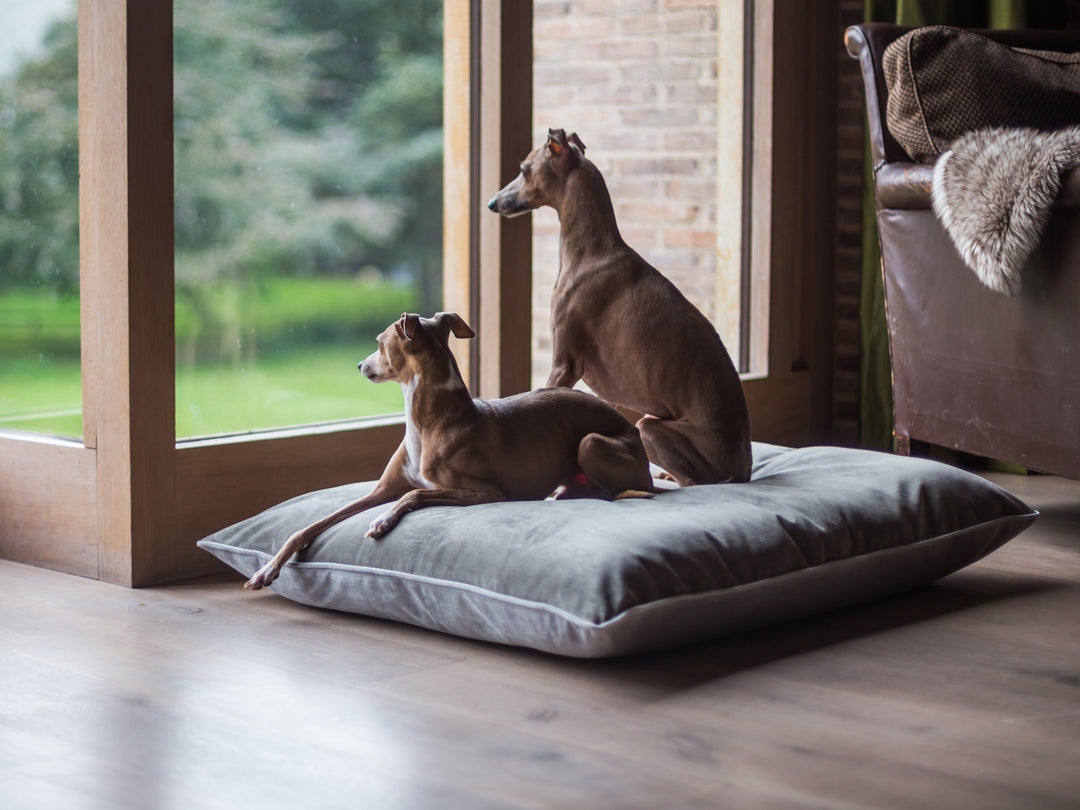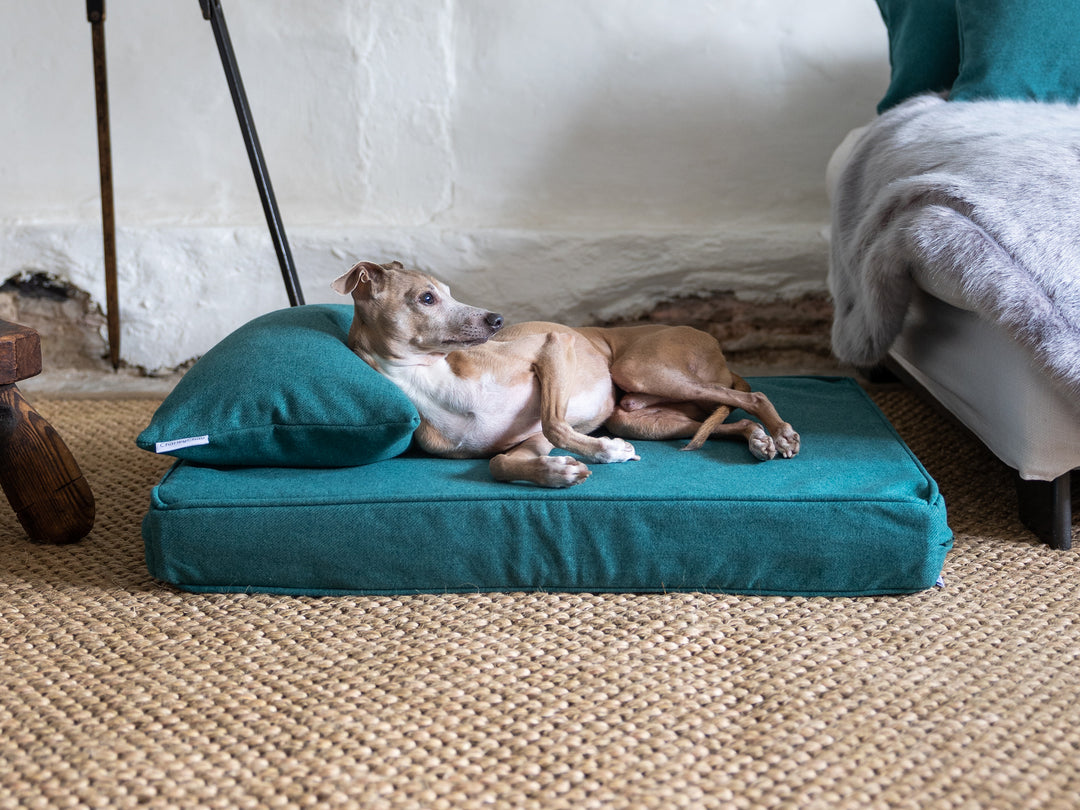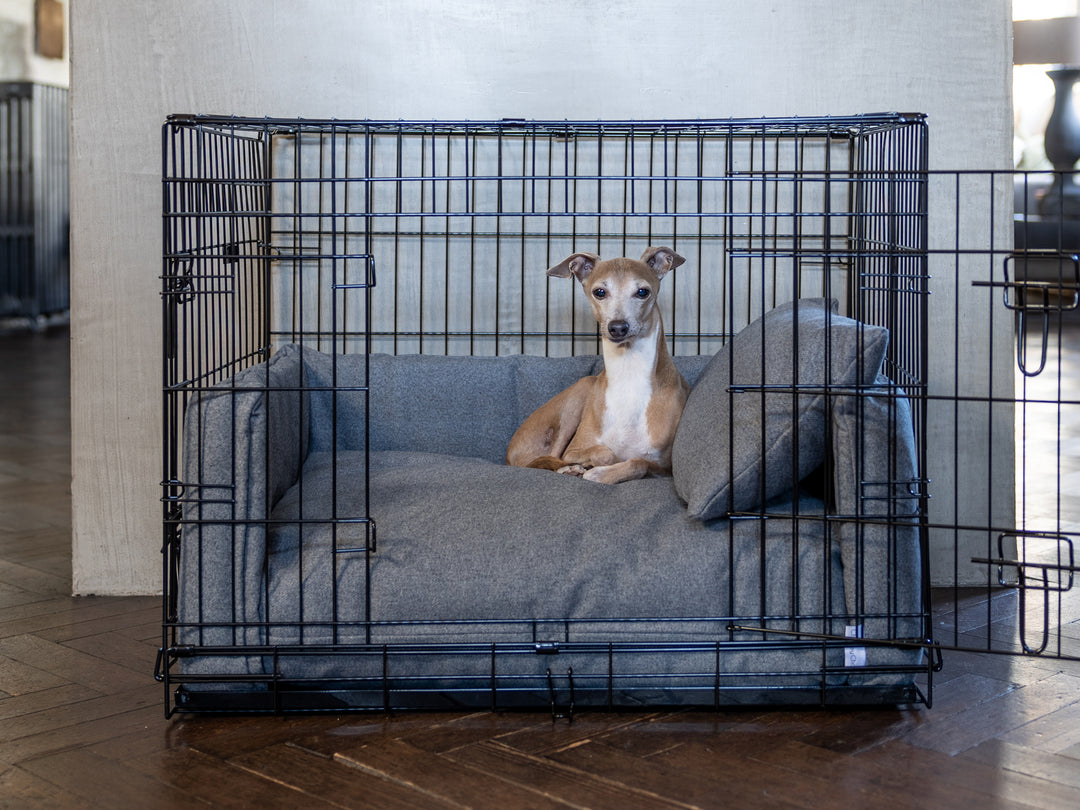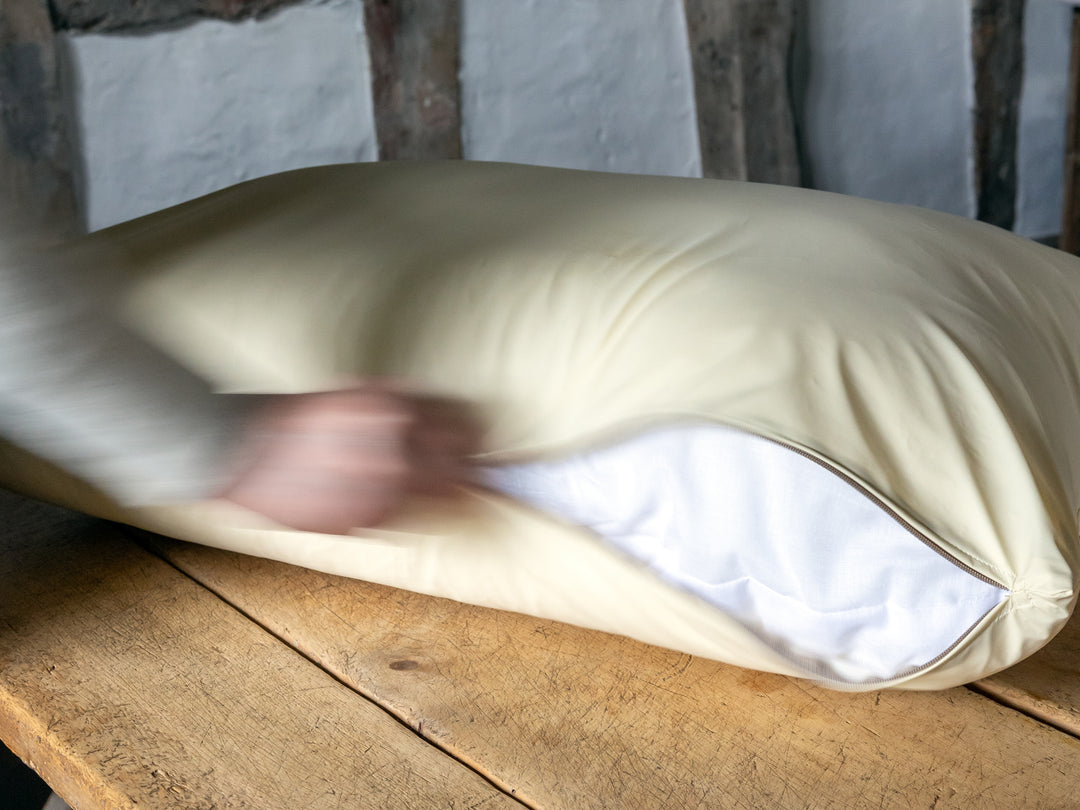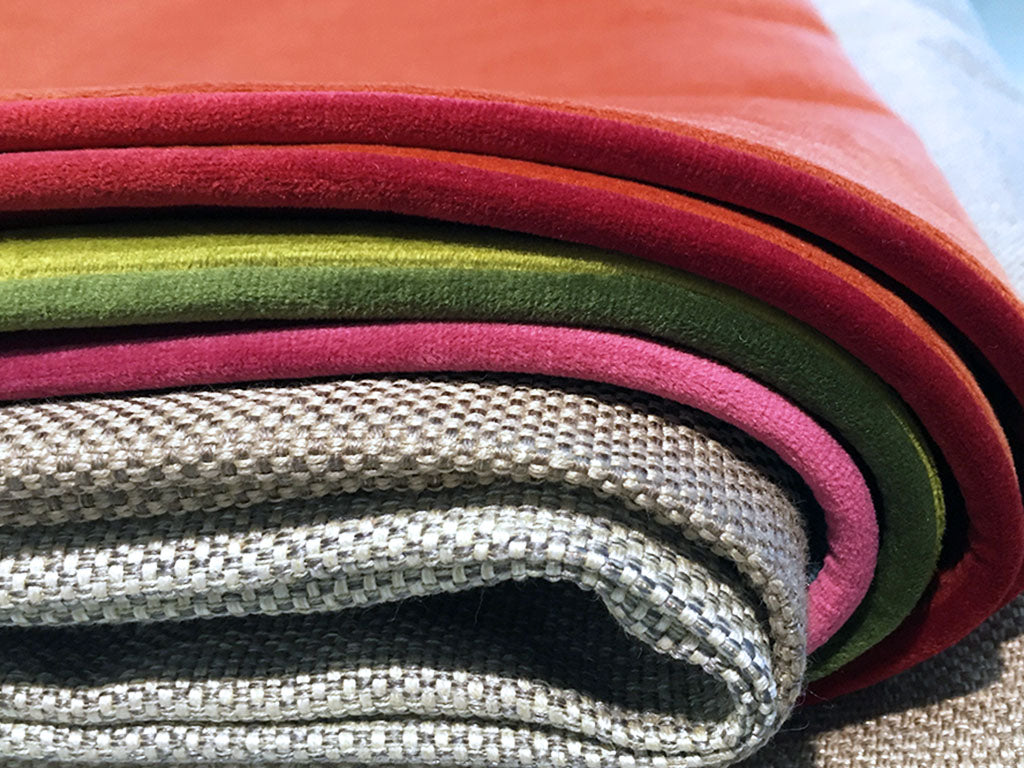Dealing with a damp dog bed
Fiona Thompson, fabulous Scottish artist, a friend and also a customer contacted us recently to ask for advice on dealing with a damp dog bed. And she's not the first person to do so!
Fiona has a gorgeous pack : Milly the Labrador, JJ and Friday the Whippets, and Zoomie and Lottie the Italian Greyhounds. Their home is filled with our entire collection of dog beds and blankets!

Milly by Fiona Thomson (www.fionathomson.com)
Fiona had a very specific issue to deal with: Milly’s overnight bed in the kitchen was damp. Not a little bit damp but very damp - wet through at the bottom every morning. Fiona was having to wash and replace the bedding every day. Not only was the washing driving Fiona mad but Milly had started to avoid her bed.
We discussed Milly’s existing bed set-up in detail to try to work out what was going on as Fiona was sure that the damp was not due to any "accidents" or even deliberate bed sabotage by the rest of the pack!
Milly's bed was an oval plastic basket (not a Charley Chau) with solid sides and some small ventilation holes at the bottom. Inside the basket Fiona had placed several layers of vet bed, a Charley Chau Day Bed and then another layer of vet bed on top. The vet bed at the bottom of the basket in particular was damp, sometimes even soaking wet, and moisture was seeping upwards into the Day Bed.
We then grilled Fiona on the interior of the room ... stone floor, no underfloor heating, basket placed in front of wood burning stove, etc.
We came to the conclusion that the excessive moisture in Milly's dog bed was a result of condensation forming in the bottom of the plastic basket. An extreme case of condensation but condensation nonetheless!
How does condensation form to make a dog bed damp??
When a dog is lying in their bed the air in the bed warms up. If the bed is in contact with a cold surface (e.g. a stone floor in a country cottage in this case) the warm air coming into contact with the cold surface will result in condensation. Think bathroom window after a hot shower on a cold morning.
In the case of Milly’s bed, the floor underneath her bed was cold and the basket itself was not very well ventilated even though there were a small number of ventilation holes.This meant that not only was condensation able to form at the bottom of the bed but the moisture wasn't able to evaporate naturally either.
So what did we recommend to combat Milly's damp dog bed?
A very simple solution in this case and one that has worked for many of our customers:
Firstly, raise the dog bed off the floor so that the sleeping area is not in contact with a cold surface.
Secondly, ensure the bed is well ventilated.
We have some lovely Raised Dog Beds in our collection and a raised wicker bed was duly dispatched to Fiona's studio in the Highlands of Scotland.
The results were immediate! On the morning after the bed arrived we received a message from Fiona exclaiming with glee that on checking Milly's bed that morning, the bed was bone dry!
And the good news is that we're now two months on and Milly's bed has remained bone dry and Fiona is back to one wash a week instead of one wash every day! Apparently it's bliss in the ktichen now as previously there was always the noise of the washing machine rumbling away in the background!
Milly no longer has a bed that becomes more and more damp through the night and Fiona is not washing dog bedding on a daily basis. Win-win!
Most importantly though, Fiona has also reported that she can see that Milly is much more comfortable in her bed and that is what it's all about!




